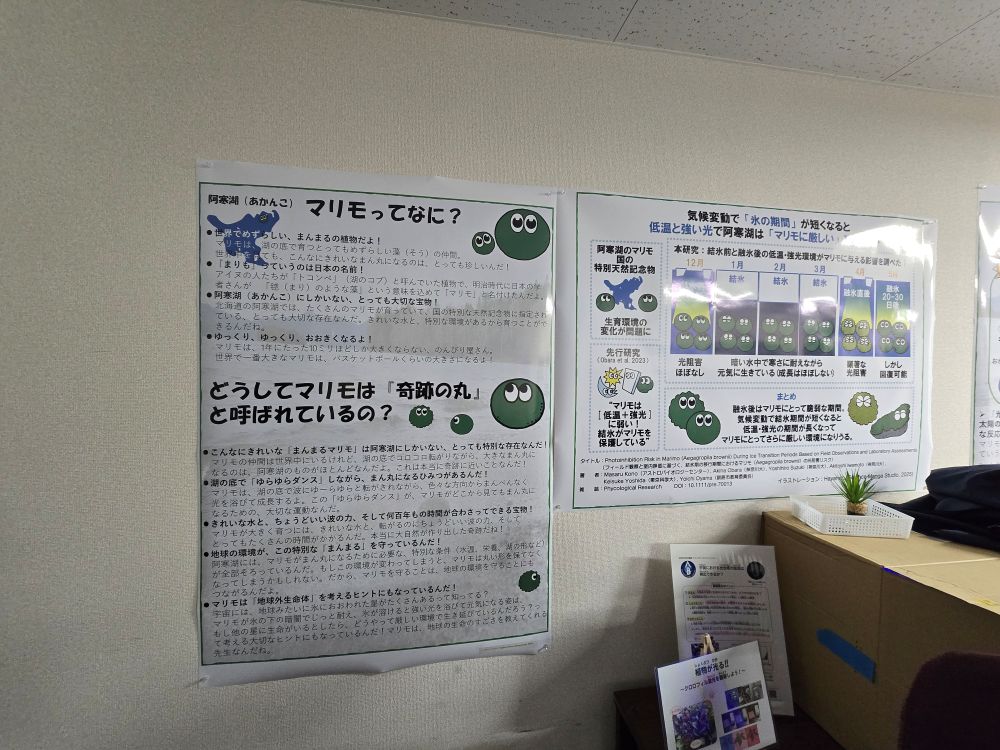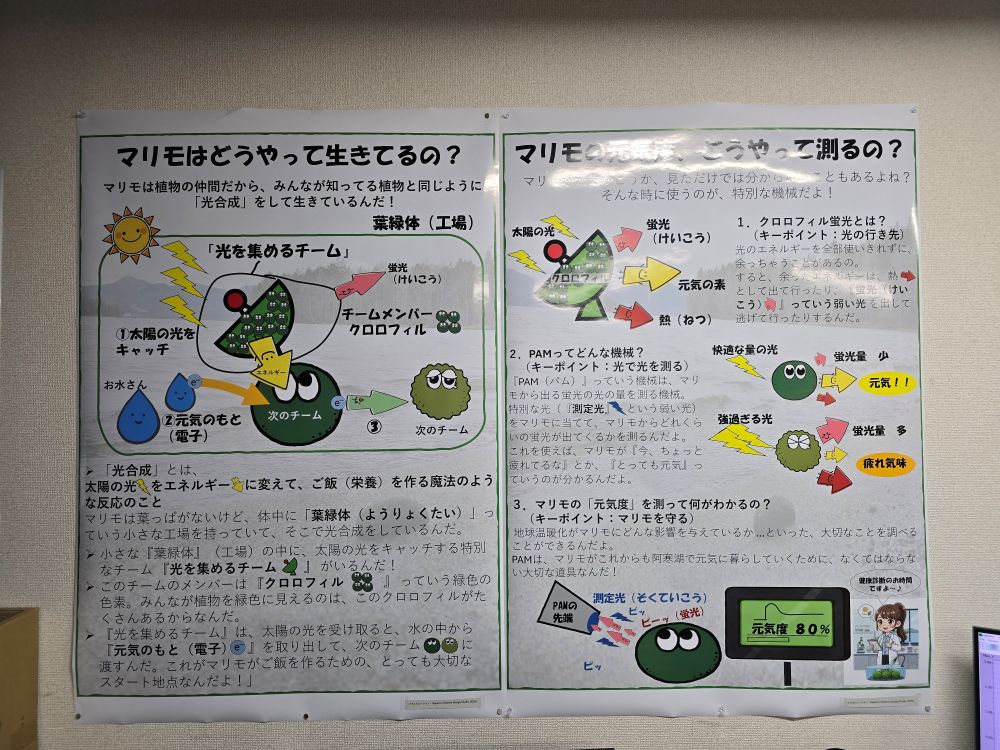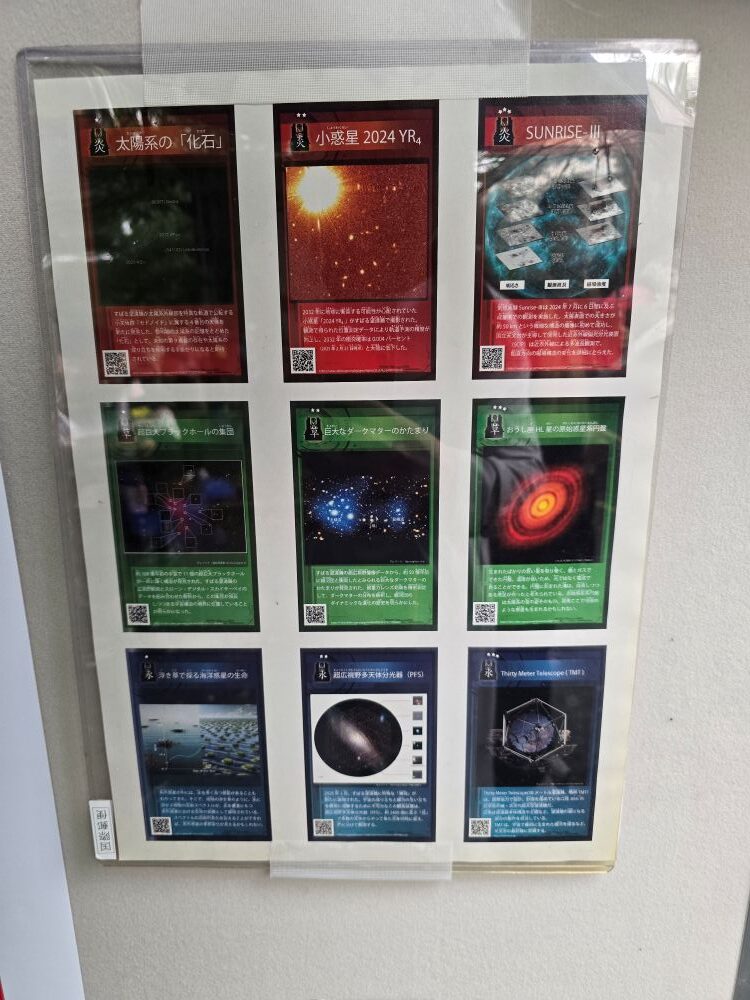NAOJ OPEN DAY 2025
Captain’s Log, Stardate 60973.7
Today marked the annual Mitaka Star & Space Day (三鷹・星と宇宙の日) at the National Astronomical Observatory of Japan (NAOJ). The weather, unfortunately, did not cooperate—rain fell steadily through the morning—but even the clouds could not dampen the enthusiasm of the many visitors who arrived to explore the frontier of astronomy. The observatory grounds were alive with energy, umbrellas in hand and eyes full of curiosity.


Figure 1: the new posters about the life cycle and physiology of marimo
Our group’s exhibition focused on the study of marimo (moss balls)—a topic that continues to fascinate visitors. This year’s display highlighted how these spherical green algae endure harsh winters, surviving beneath layers of ice. Their remarkable resilience offers more than just biological insight; it provides clues to how life might persist under extreme conditions on icy worlds beyond Earth, such as Europa or Enceladus. The connection between a quiet lake and the vast cosmos never fails to inspire reflection.
Another highlight of this year’s event was the lenticular-printed postcard featuring the black hole jets of M87. By tilting the card, one could see the jet structure change across multiple years—an elegant way to visualize long-term astronomical observation. Many visitors were surprised to learn that even something as distant and seemingly eternal as a black hole’s jet is, in fact, dynamic and evolving.

Perhaps the most heartwarming surprise was the revival of the “Andromeda Fantasy” card game. Once a beloved activity among staff and students before the pandemic, it had disappeared for several years. Seeing it return this year, with participants once again gathered and exchanged laughter and strategies, felt like a small but meaningful symbol of renewal.
Despite the rain, the day was a success. Between the exhibitions, games, and conversations, the sense of wonder that astronomy brings was alive and well. As the clouds slowly cleared toward evening, I couldn’t help but think that even on a rainy day, curiosity remains our brightest star.
Captain out.